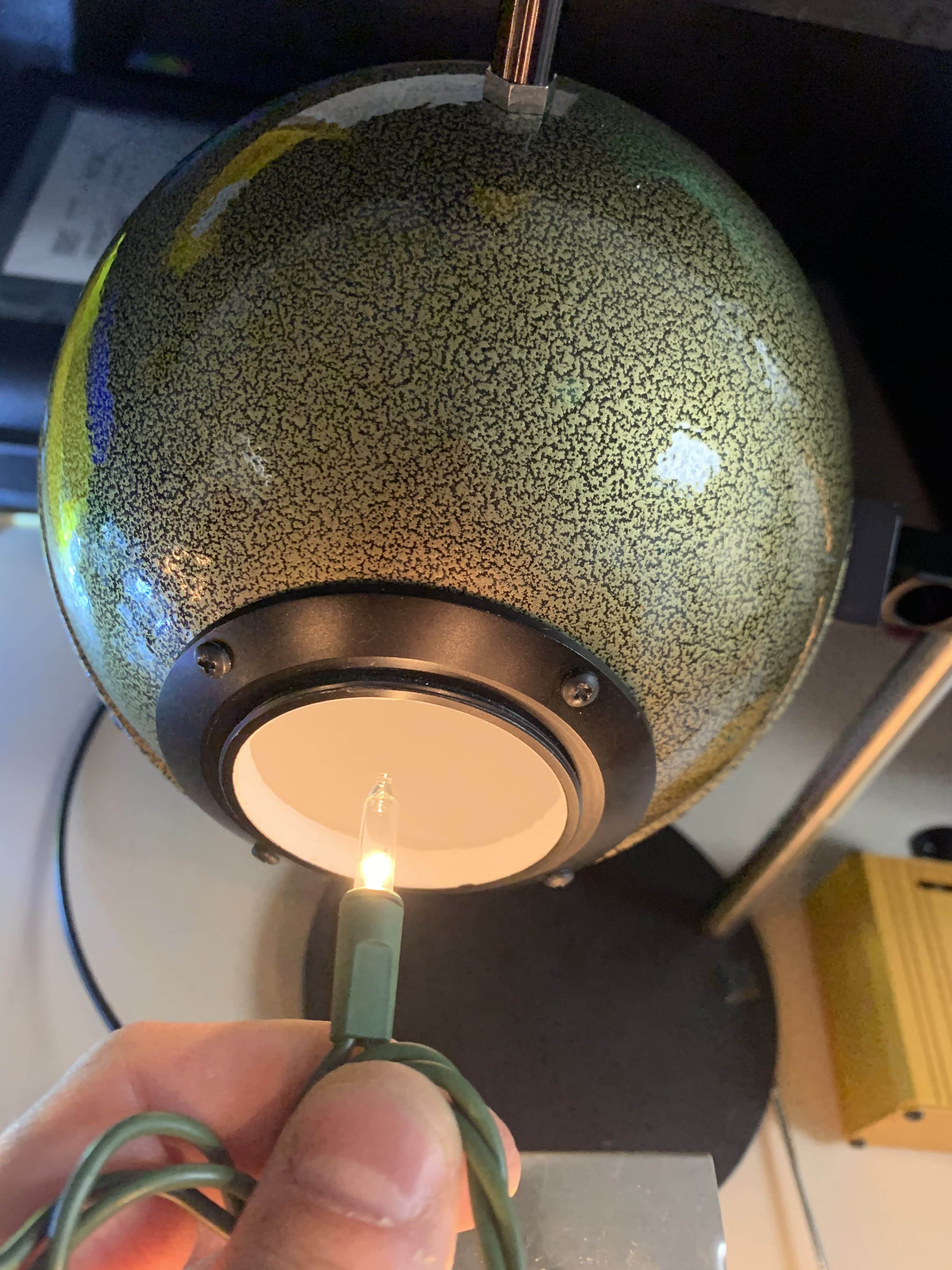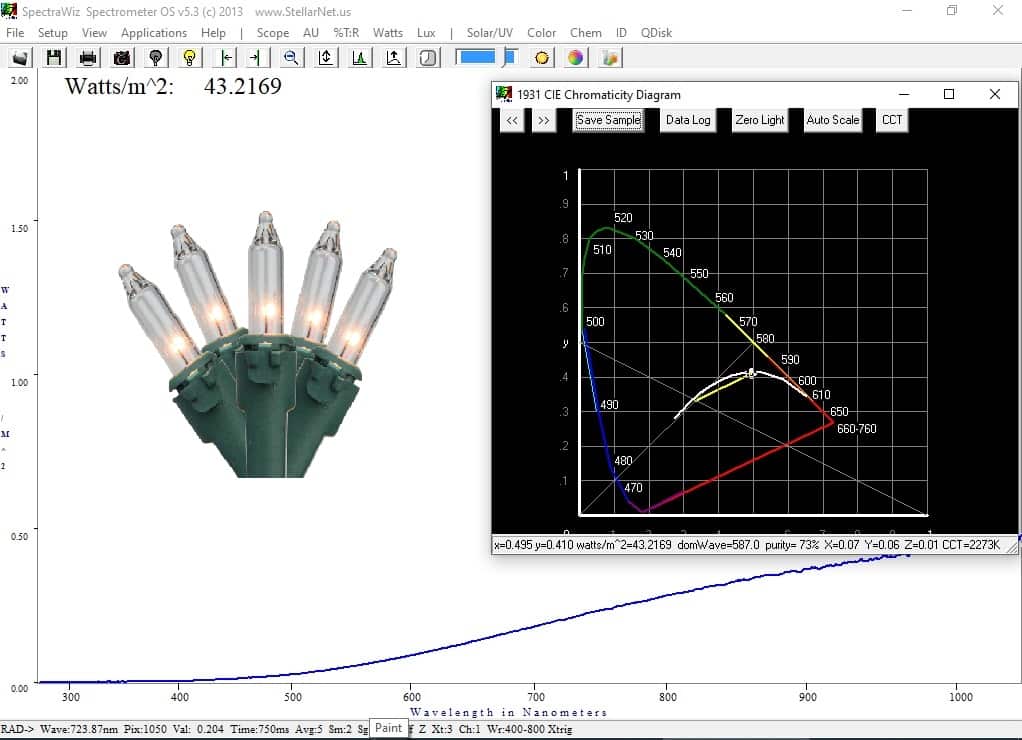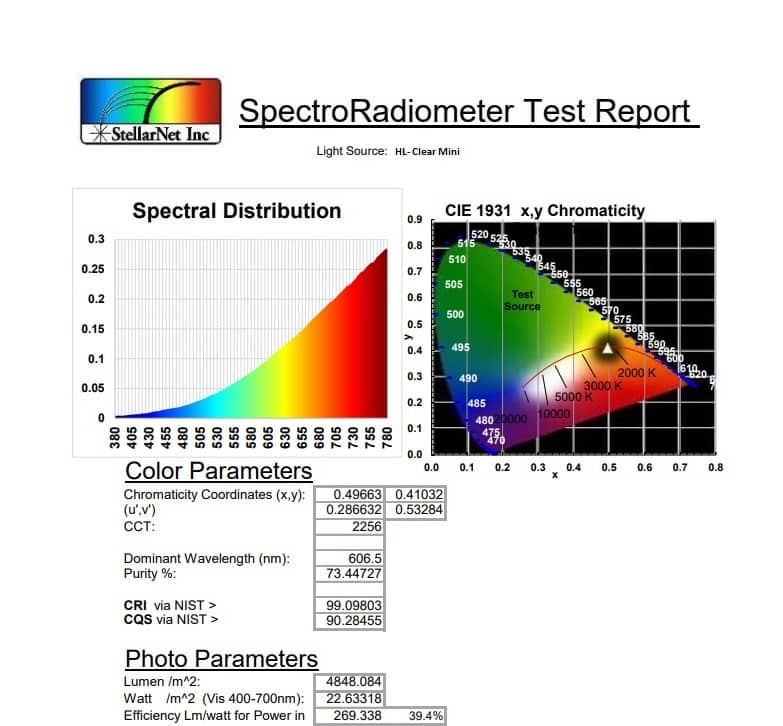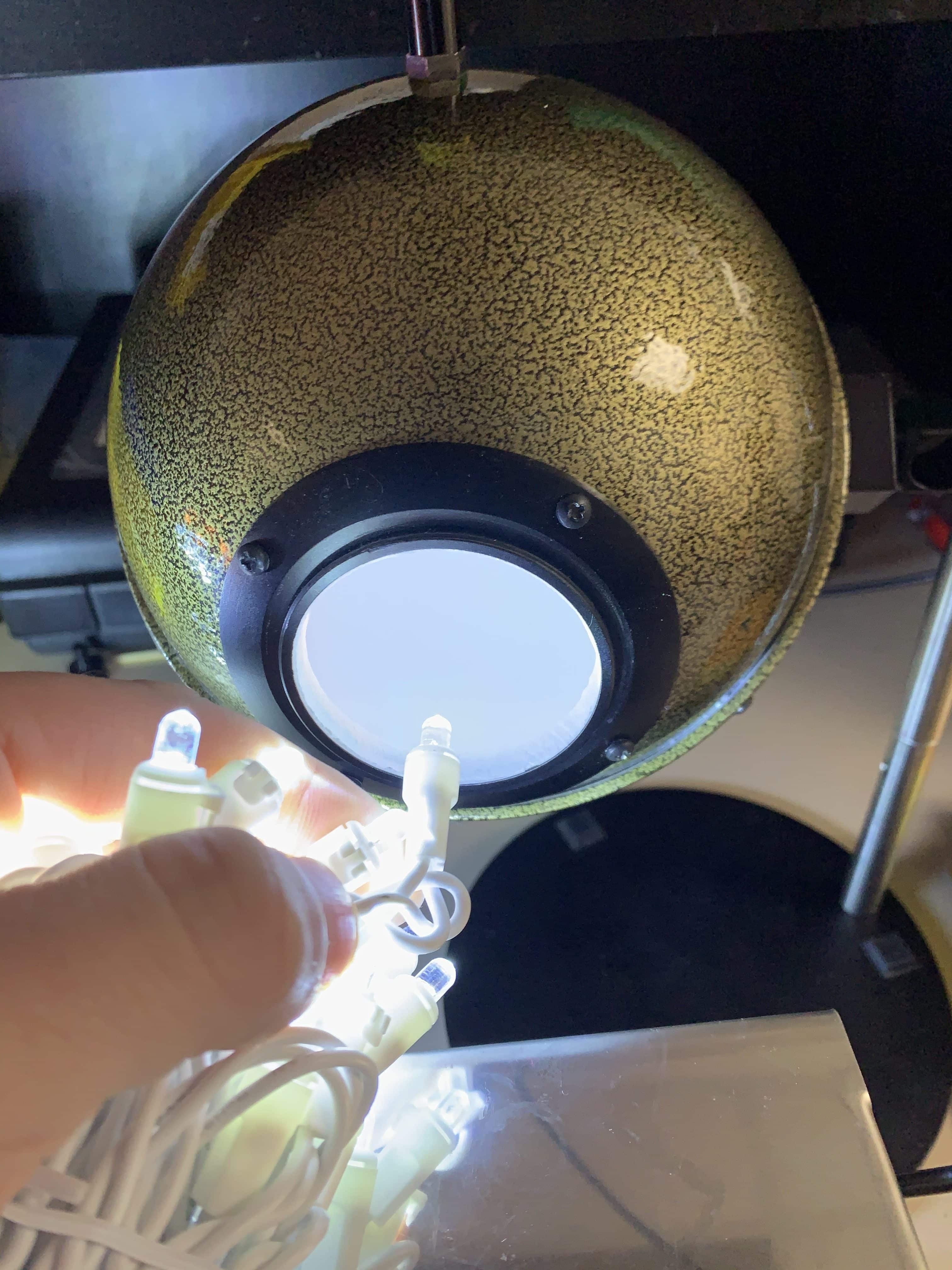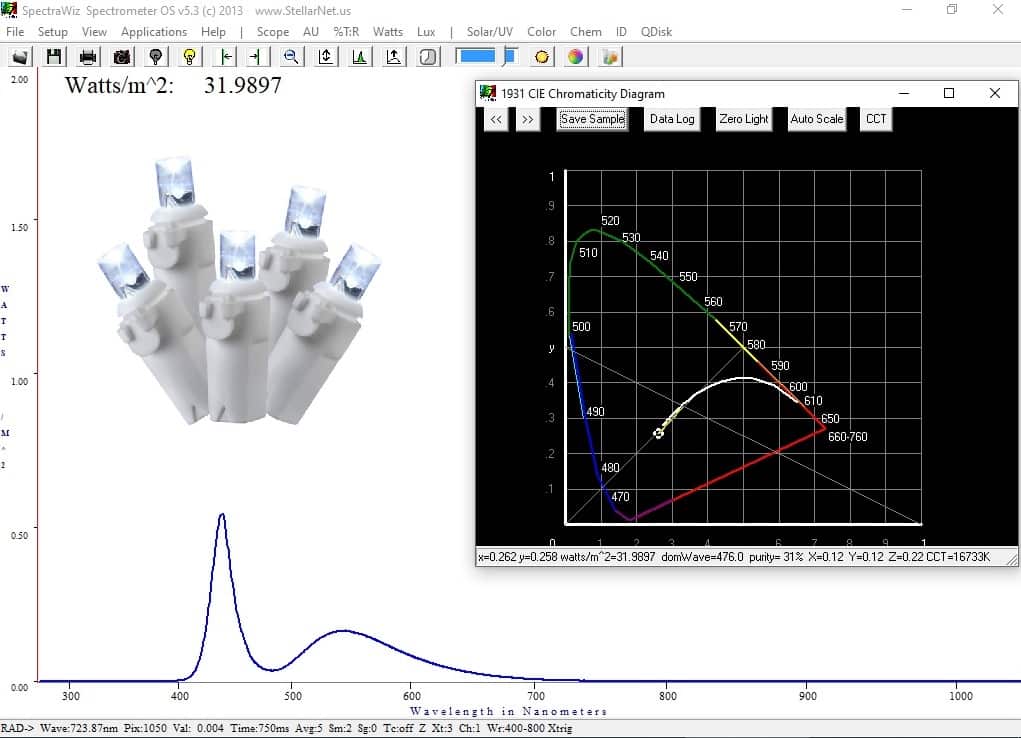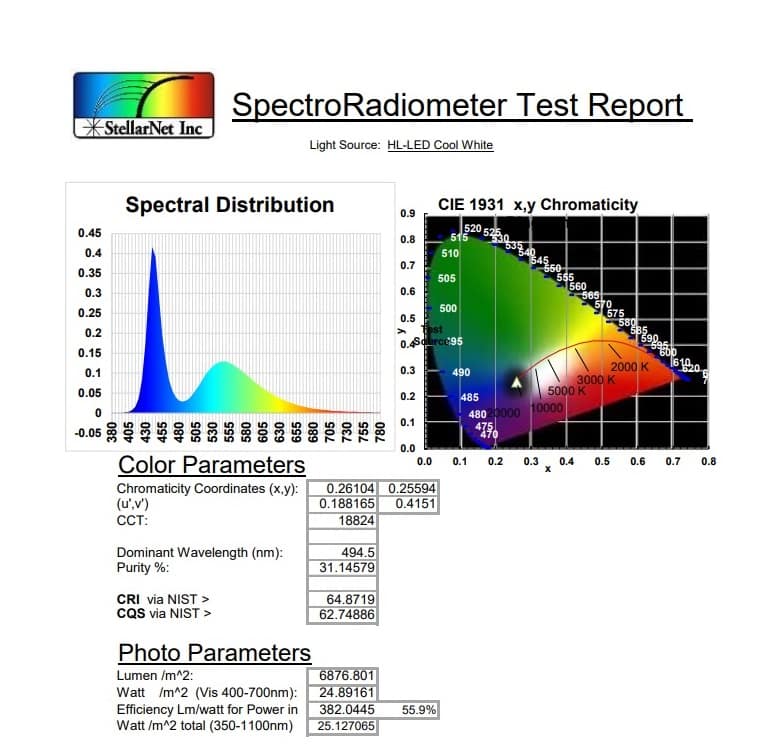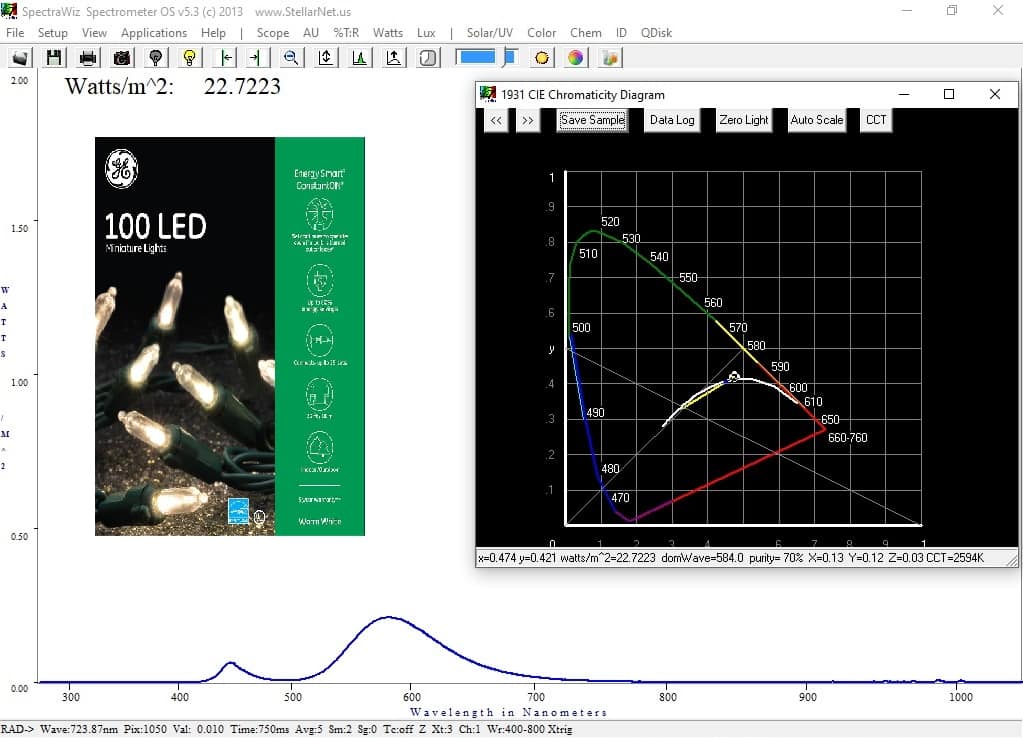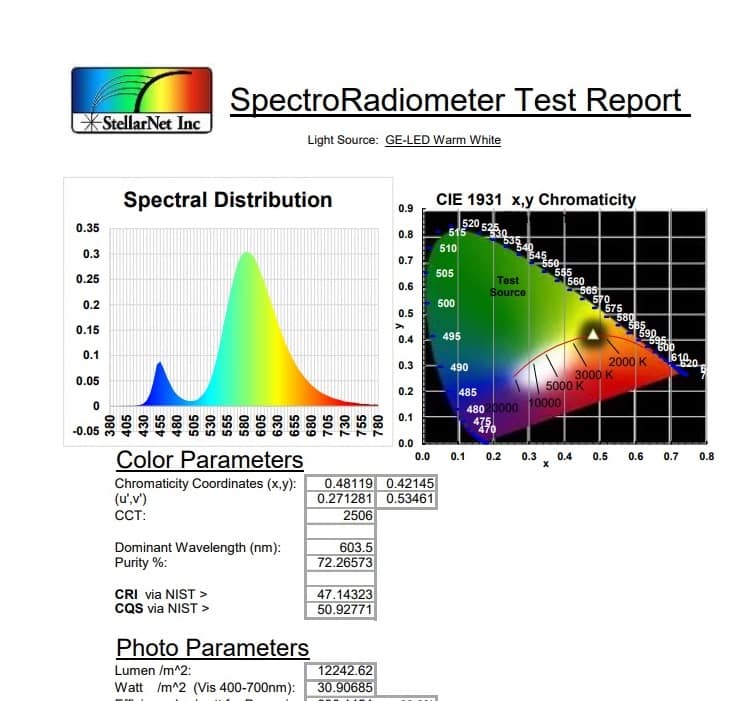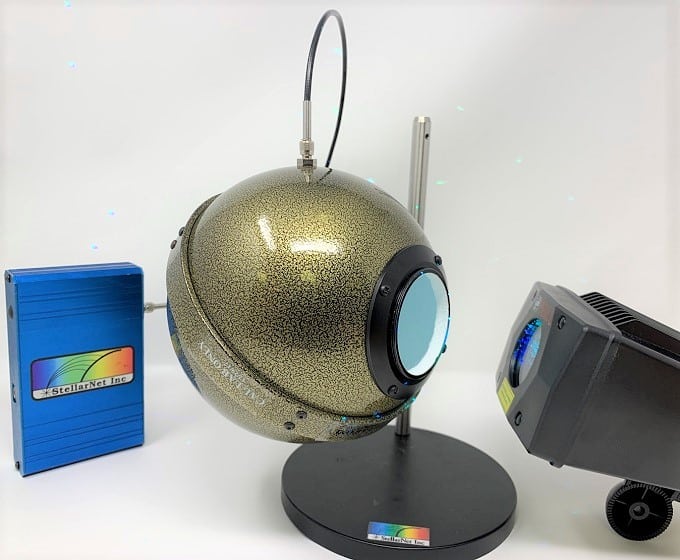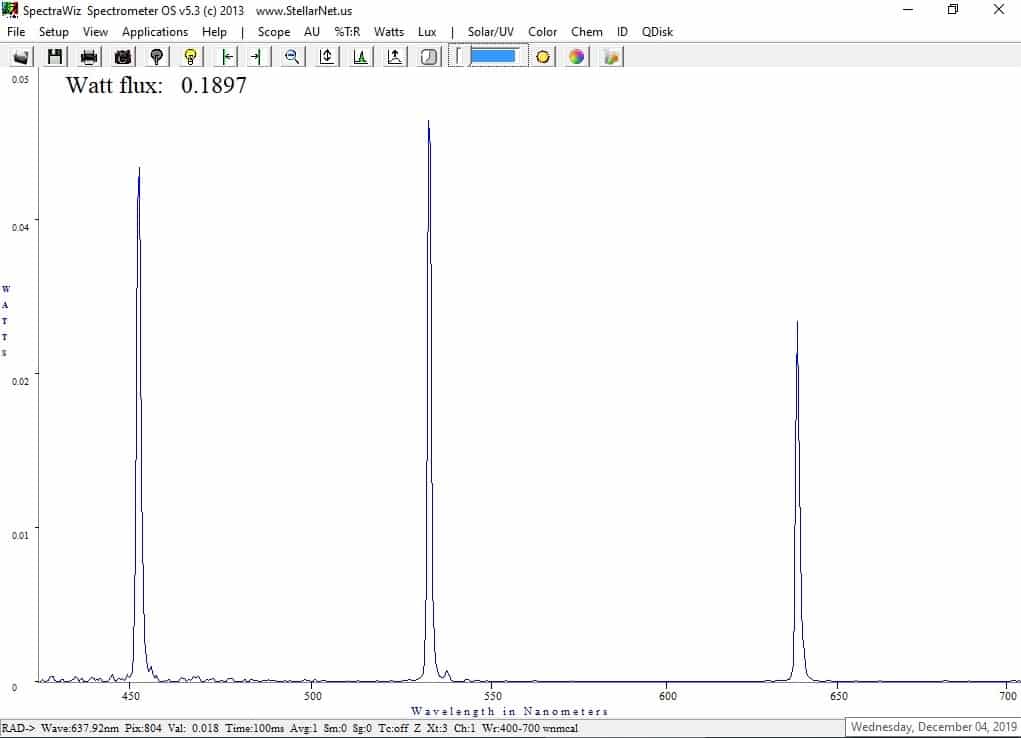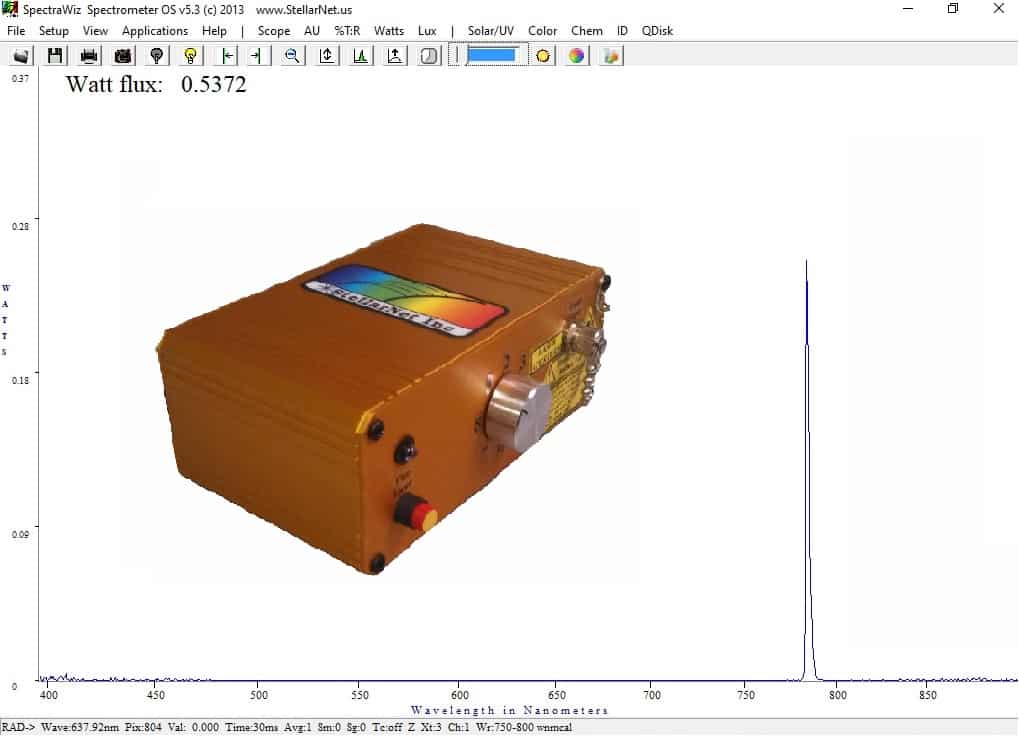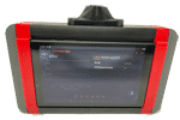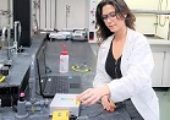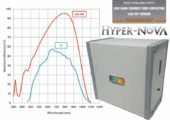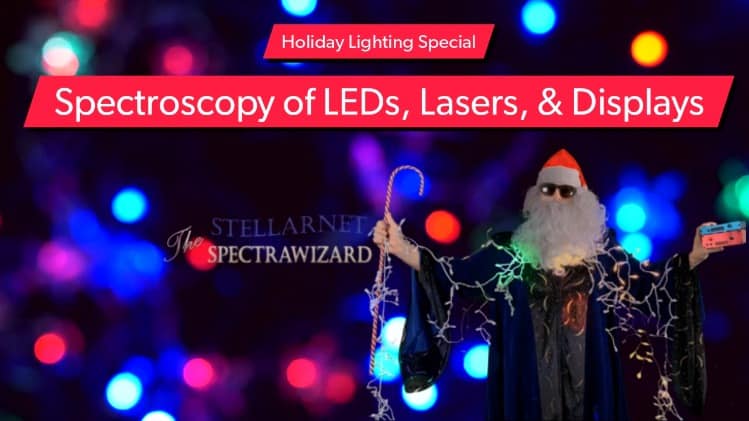
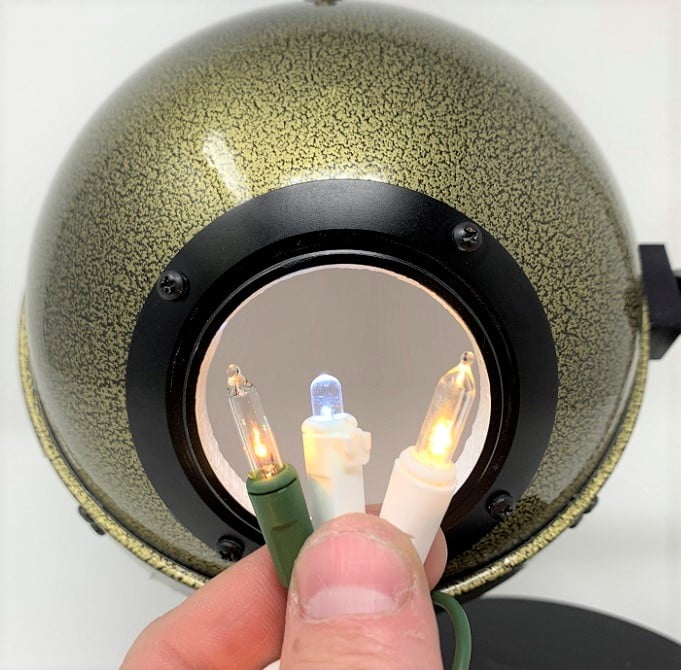
1. Assessing the color of white holiday lights
White light, cool white, warm white, incandescent white, LEDs… Just how many different white lights can there be? At this point, we all have purchased the wrong type of white!
Here at StellarNet we decided to go holiday light shopping and bought a variety of white holiday lights to test using our spectrometers. We purchased traditional incandescent filament bulbs, and two different LED versions, warm and cool white. Below are the results showing the similarities and differences of the light emission from these different lighting technologies.
Traditional Incandescent Lights
Twenty years ago, there wasn’t much choice in light technology for the holidays. Filament lights dominated, with their soft white glow, and were pretty uniform in color due to the standardization of the filament chemistry. Wanted a color instead of white? Just put a colored film over the bulb and voila! Color! Incandescent bulbs are still available today and inexpensive to buy. However, these lights are energy hogs, easily trip electrical breakers, and are essentially designed to self-destruct. Running an electrical current through a filament eventually degrades the filament to the point of destruction.
Using our LED Measurement System with a BLUE-Wave spectrometer and IS6 integrating sphere we are easily able to measure the spectral distribution of the light emitted from an incandescent bulb, it’s xy chromaticity, CCT, and CRI values. We have several software platforms that can be used from our real-time SpectraWiz Windows software, to our LED Test Report Software, as well as our mobile Radiometry App!
Cool White LEDs
LED technology has been around for a number of decades, but it’s only been in the past 10 years that it has become the major player in holiday lighting. LEDs are a radical departure from Edison’s incandescent light. They produce more lumens per watt of input power than incandescent bulbs— they’re more efficient at producing light. LEDs are a completely different technology – they rely on the band-gap of semiconductor compounds to emit a single wavelength of light. Making “white” light is not a simple task. One approach is to mix the light from several colored LEDs to create a spectral power distribution that appears white.
Another technique to make white LEDs, used here in our holiday lights, is to use a phosphor together with a short-wavelength blue LED. When the phosphor is illuminated by blue light, it emits yellow light having a fairly broad spectral power distribution. The remaining blue light, when mixed with the yellow light, results in white light. New phosphors are constantly being developed to improve their color rendering.
Warm White LEDs
Designing LEDs to produce the consumer’s desired effects seems like a fairly difficult task. Using a StellarNet spectroradiometer designed for LED test and measurement you can easily adjust parameters of your LED arrays or development materials and test the emission. In this test we can see the “warm” white is designed to be as similar to incandescent as possible measuring xy chroma = 0.48, 0.42, CCT= ~2594, but only a CRI of 47.
2. Laser projection holiday light systems
Who needs to string lights when you can use light amplification by stimulated emission of radiation (in other words, LASERs) to create a dazzling display of holiday spirit in just a few minutes? Curious about the laser projection systems, we bought two and took them apart to find out. The first laser projection system is a high power system, with three lasers that can be mixed to create different colors. On the box, the lasers are listed as <5mW.
Using our Laser Measurement System (similar to our previous LED testing system but with a calibration for total power in mW and a calibrated diffuser set) we measured the actual power output, which was much higher than that. For comparison, we also tested a few of our Raman spectroscopy lasers which measure ~500mW for 785nm Red. Here, we are measuring the total laser emission from the projector. Individual beams must be rated <5mW apparently. Regardless, I would advise any consumer using these high power laser projectors to be careful and never to look directly into them.
The second laser projection system was less expensive and contained only two lasers and an LED. The mechanism rotated a mask, in order to project rotating snowflakes and snowmen.
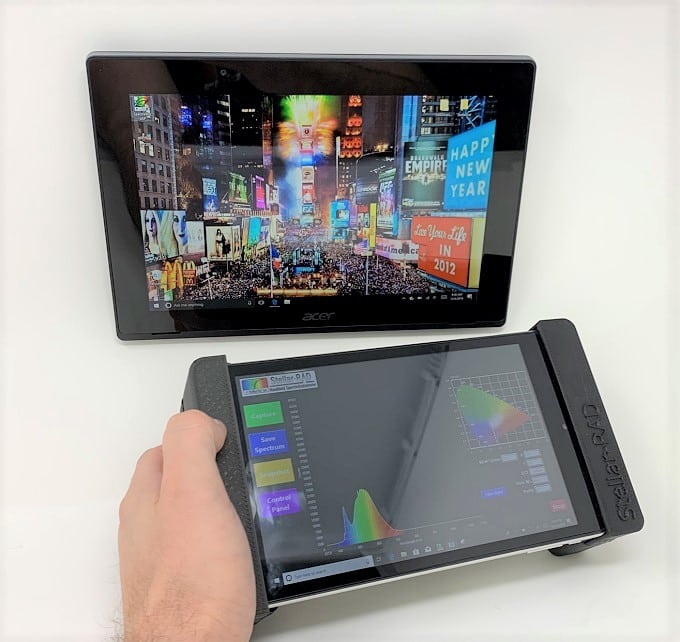
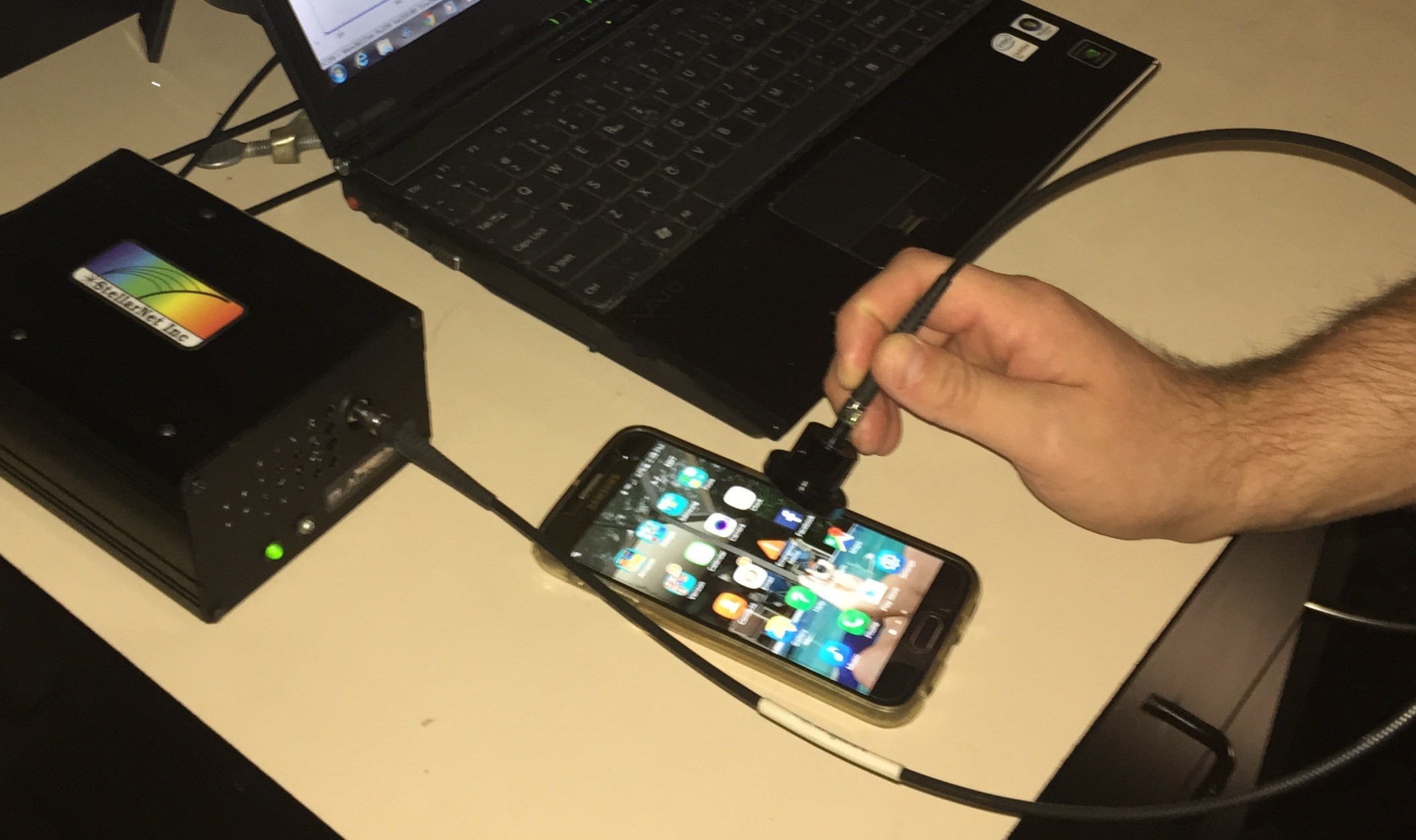
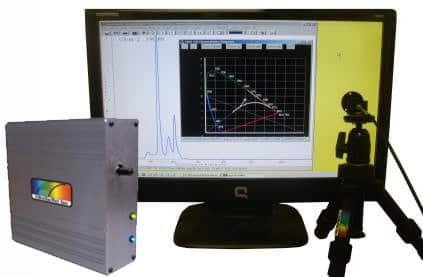
3. Display Lighting, the Times Square way
The holiday season normally ends with a bang, as millions watch as the new year arrives around the world. This year I am sure more than others, people look forward to 2021! Display lighting is redefining urban advertising. Over the years, Times Square in New York City has used display technology to make it’s intersection one of the most recognizable in the world.
StellarNet offers a variety of Display Measurement System that allows designers, manufacturers, and even installers to test their display lighting whenever they need. Reliably measure display output intensity in Candela/m^2 (nits), xy chromaticity, color purity, contrast, specular and diffuse reflection, and a variety of other measurements. All sizes of display modules and panels from micro/mobile displays such as cell phones and tablets to large LCD TVs. Likewise, systems can be configured for dim light emission as well as extremely bright.
Happy Holidays and Merry Christmas. Feel free to drop us a line at ContactUs@StellarNet.us and see your idea become our next fun App note.

